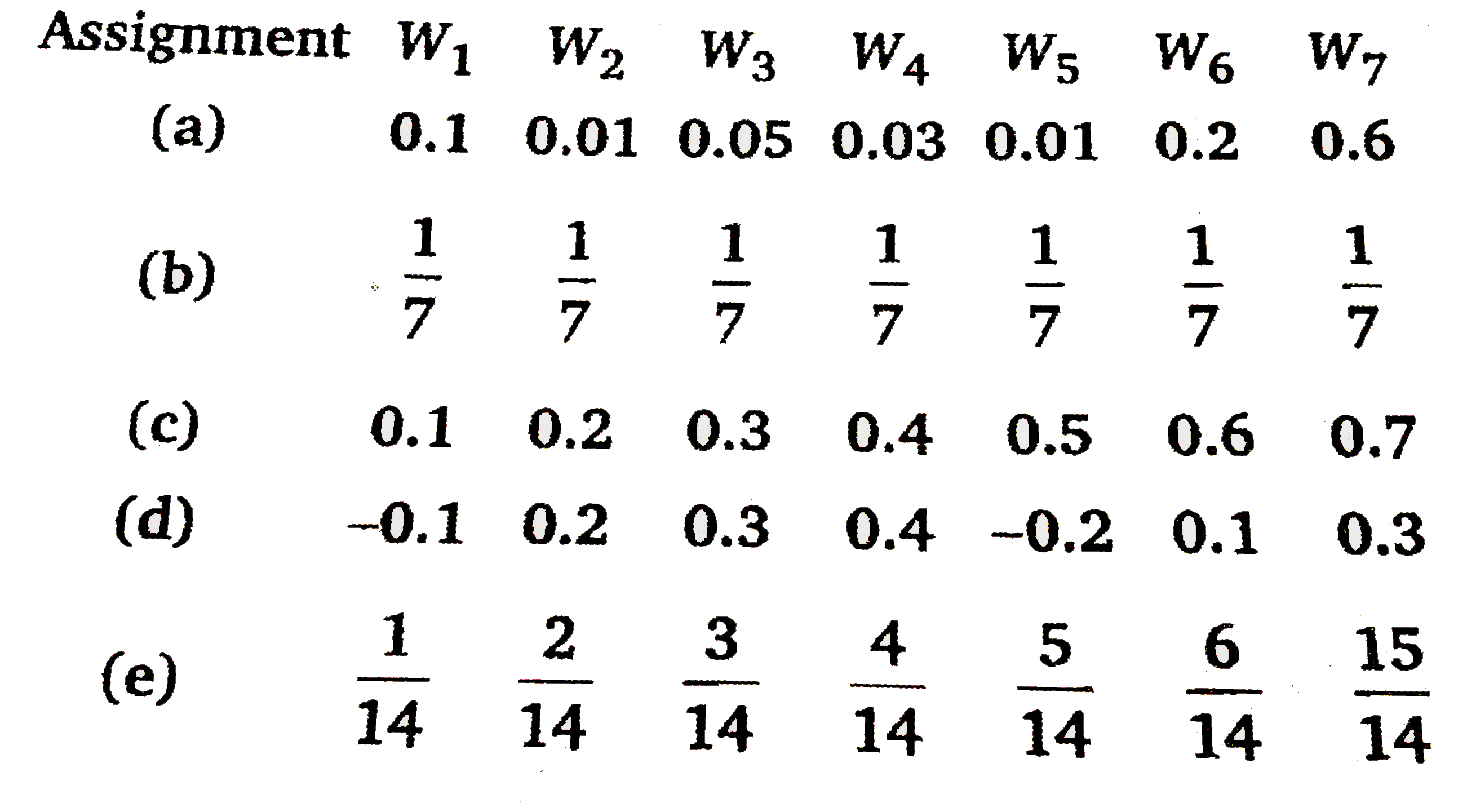A determinant is chosen at random from the set of all determinant of order 2 with elements 0 or 1 only. Find the probability that the determinant chosen is nonzero.Solution in Bengali
Determinant Δ of order 2 will be of the form ∣∣∣abcd∣∣∣.
∴Δ=ad−bc
The total number of ways of choosing a, b, c and d is
2×2×2×2=16
Now, Δ≠0 if and only if either ad = 1, bc = 0 or ad = 0, bc = 1.
For ad = 1, (a,d) -= (1, 1).
For bc = 0, (b, c) -= (0, 1), (1, 0), (0, 0).
So, three cases are there.
Similarly, for ad = 0 and bc = 1, there will be three cases.
∴ Number of favourable cases = 3 + 3 = 6
So, required probability = 616=38
Topper's Solved these Questions
- PROBABILITY I BOOK - CENGAGE PUBLICATIONCHAPTER - PROBABILITY I EXERCISE - Solved Example
9 Videos
- PROBABILITY I BOOK - CENGAGE PUBLICATIONCHAPTER - PROBABILITY I EXERCISE - Exercise 9.1
6 Videos
- PROBABILITYBOOK - CENGAGE PUBLICATIONCHAPTER - PROBABILITYEXERCISE - All Questions
470 Videos
- PROBABILITY IIBOOK - CENGAGE PUBLICATIONCHAPTER - PROBABILITY IIEXERCISE - MULTIPLE CORRECT ANSWER TYPE
6 Videos
Similar Questions
When a fair dice is rolled, the number that comes up top is a number between one to six. Assuming we roll the dice once, to check the possibility of three coming up.
View SolutionWhich of the following cannot be valid assignment of probabilities for outcomes of sample space S={W1,W2,W3,W4,W5,W6,W7}

View SolutionA coin is tossed three times, consider the following events. A : ‘No head appears’, B: ‘Exactly one head appears’ and C: ‘Atleast two appear’. Do they form a set of mutually exclusive and exhaustive events?
View SolutionLet EandF be two independent events. The probability that exactly one of them occurs is 1125 and the probability if none of them occurring is 225. If P(T) denotes the probability of occurrence of the event T, then (a) P(E)=45,P(F)=35 (b) P(E)=15,P(F)=25 (c) P(E)=25,P(F)=15 (d) P(E)=35,P(F)=45
View SolutionFind the number of nonzero determinant of order 2 with elements 0 or 1 only.
View SolutionA determinant is chosen at random from the set of all determinant of order 2 with elements 0 or 1 only. Find the probability that the determinant chosen is nonzero.
View SolutionA matrix is chosen at random from the set of all 2×2 matrices with elements 0 and 1 only. The probability that determinant is positive, is
View SolutionA determinant is chosen at random from the set of all determinants of order two with elements 0 or 1 only. Probability that the determinant chosen has positive value is
View SolutionA matrix is chosen at random from a set of all matrices of order 2, with elements 0 or 1 only. The probability that the determinant of the matrix chosen is non zero will be
View SolutionA determinant is chosen at random from the set of all determinants of order 2 with elements 0 or 1 only. The probability that the value of the determinant chosen is positive and nonzero
View SolutionA determinant is chosen at random from the set of all determinants of order 2 with elements 0 or 1 only. The probability that the determinant chosen is nonzero is
View SolutionA matrix is chosen at random from a set of all matrices of order 2 , with elements 0 or 1 only. The probability that the determinant of the matrix chosen is non-zero will be :
View SolutionA matrix is chosen at random from a set of all matrices of order 2 , with elements 0 or 1 only. The probability that the determinant of the matrix chosen is non-zero will be :
View SolutionA determinant is chosen at random from a set of all determinants of order 2 with elements 0 or 1 only. The probability that the determinant chosen is non-zero is
View SolutionA determinant si chosen at random from the set of all determinats of order 2 with elements - and 1 only . The probability that the value of the determinant chosen is positive is :
View SolutionFind the number of nonzero determinant of order 2 with elements 0 or 1 only.
View Solution
